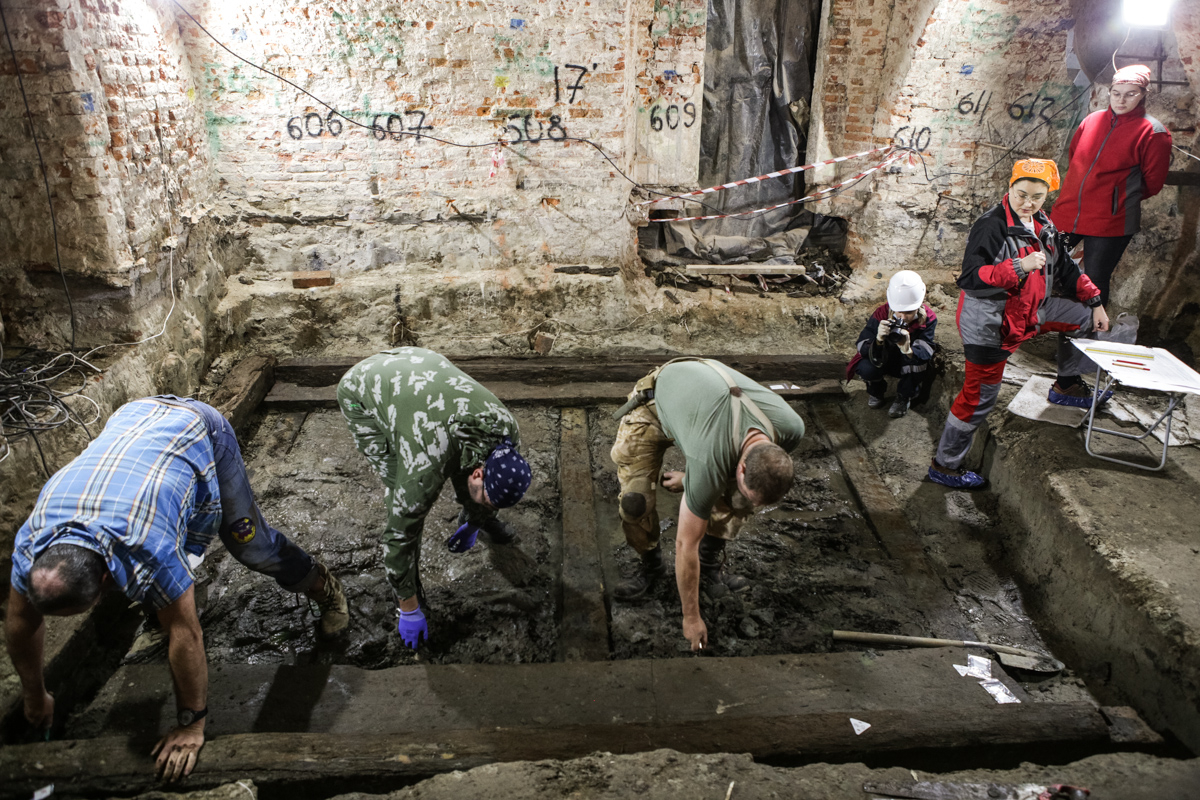Archaeologists from St Petersburg University begin restoration of Menshikov Palace’s 300-year-old ice storage room

Experts from the Lebedev Laboratory of Archaeology, Historical Sociology and Cultural Heritage at St Petersburg University have found more than 10,000 artefacts dating back to the 18th – 19th centuries in the First Cadet Corps. One of the most interesting finds is a wooden ice storage room from the time of Peter the Great. At present, the unique construction has been dismantled and its restoration has started.
After the conservation and restoration of the site, it is planned to display it as a museum piece in the same place where it was found – in the basement of the building.
Since 2019, St Petersburg University has been restoring the Corner Chambers of the Alexander Menshikov Palace on the Universitetskaya Embankment. They were transferred to the Cadet Corps in the 1730s. During the work, many unique artefacts of the 18th and 19th centuries, which are of great interest to scholars, have been found. Among them, a special place is occupied by an ice storage room – a wooden food store.
‘We have very few buildings preserved from the time of Peter the Great. Most of what we confidently date to early St Petersburg are the buildings of the 1720s and later, or buildings that were greatly rebuilt during the periods of Empress Anna Ioannovna and Empress Elizaveta Petrovna,’ said Elena Mikhailova, Head of the Lebedev Laboratory of Archaeology, Historical Sociology and Cultural Heritage at St Petersburg University.
Here we see an authentic wooden structure in an excellent state of preservation for this kind of site. It is certain to have been built in the time of Peter the Great in the house of an associate of the Emperor. We know for sure that the products that were stored here were served at table, including to Peter the Great and his people – ‘the fledglings of the Petrine nest’.
Elena Mikhailova, Head of the Lebedev Laboratory of Archaeology, Historical Socology and Cultural Heritage at St Petersburg University
According to Elena Mikhailova, the temperature in the ice storage room was similar to the temperature in modern refrigerators – about four to five degrees above zero. The way in which the ice storage room worked was that in the spring blocks of ice from the Neva River were piled into it in the form of parallelepipeds. Then, they were covered with boards or straw. After that, perishable food was placed on top. Over the summer, the ice gradually melted - the water flowed into a special opening and went into the ground. In cold weather, the need for ice delivery disappeared and returned in the spring.
At the disposal of the scholars was only one of the ice storage room crowns – the horizontal rows of the wooden frame. Initially, the design was higher. It was possible to establish the time of construction of the site thanks to the preserved records of the transfer of the Menshikov estate to the property of the Cadet Corps in 1732–1734. It is interesting that most of the ice storage rooms that have survived to this day belong to a much later time – the 19th century.
‘The fact that the site has been preserved in this state is almost unique. It became possible because, during the reconstruction of the building in the early 19th century, the ice storage room was covered up with soil and a new floor level appeared higher,’ notes Natalia Shirokova, chief architect of the restoration project of the Studio 44 architectural bureau. ‘As a result, all this time, it was in a highly moistened soil, which contributed to its conservation. All subsequent construction activities passed it by – that is why today we have a unique monument of household architecture in excellent preservation at our disposal.’
The restorers and archaeologists plan to waterproof the site where the ice storage room was found and to present it on display in the window as a museum piece. To preserve the structure, it first had to be dismantled, but the wet wood required a particularly delicate approach.
Some fragments of the ice storage room became soft like plasticine. The restorers were not therefore able to take them with their hands – they had to move the construction elements onto a special synthetic surface. However, even when the boards and logs were stronger, they also had to be dealt with very carefully. The archaeologists and restorers of the State Hermitage took part in this work; they have extensive experience in restoring objects from natural materials.
After dismantling the ice storage room, its elements were immersed in purpose-made baths for temporary storage. Now the boards and logs are in ordinary water with the addition of an antiseptic. For restoration, it is necessary to make special baths with adjustable heating to keep the wood in a preservative. It is assumed that the restoring process will last at least a year. After that, the structure will be reassembled from logs and boards. In total, the first stage of the ice storage room restoration, including the dismantling and immersion of the parts in the baths, took about ten days.

